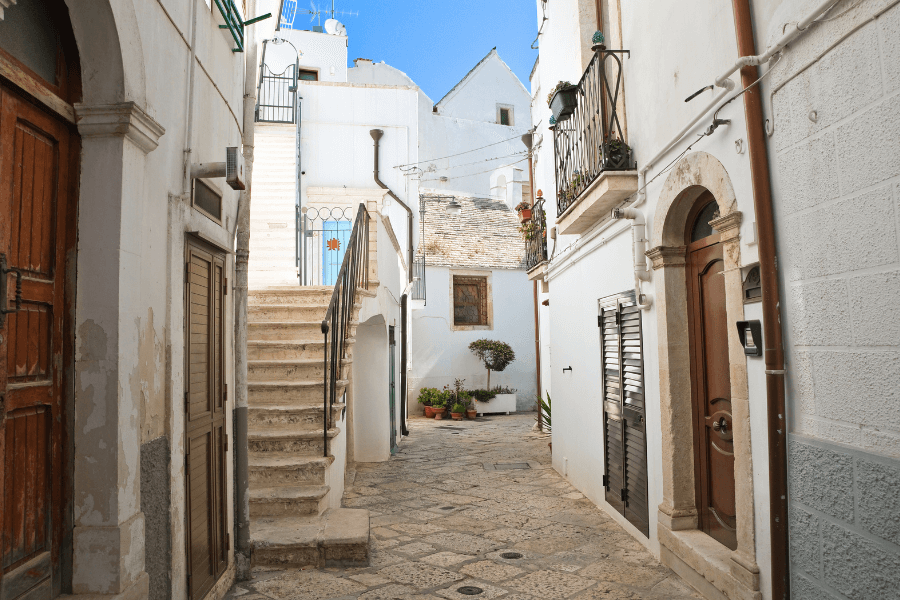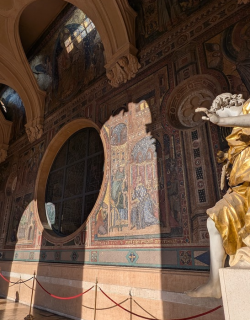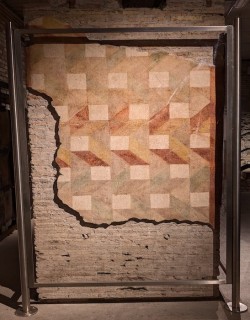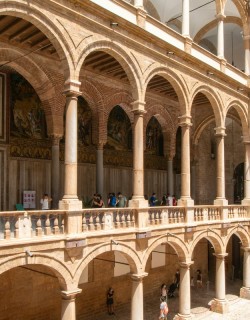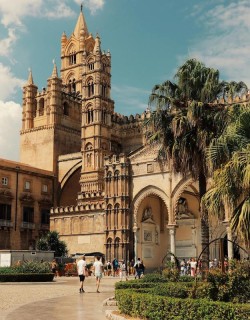Famed for its iconic trulli dwellings - distinctive circular whitewashed houses topped with narrow conical roofs - the Valle d’Itria is one of the most beautiful regions in Puglia. Situated on a high limestone plateau known as the Murgia and located midway between the Ionian and Adriatic seas, the Valle d’Itria offers an idyllic landscape of pristine whitewashed hilltowns, flower-strewn meadows, almond orchards and olive groves separated by dry-stone walls, all glinting majestically in the region’s seemingly perpetual sunshine.
Whether your idea of a relaxing holiday involves pedalling for miles along country lanes, uncovering masterful artworks in little-visited churches or sampling the delicious traditional delicacies of one of Italy’s richest culinary regions, the Valle d’Itria forms an obligatory stop on any Puglia itinerary. Read on for our guide to the towns you need to visit!
Alberobello
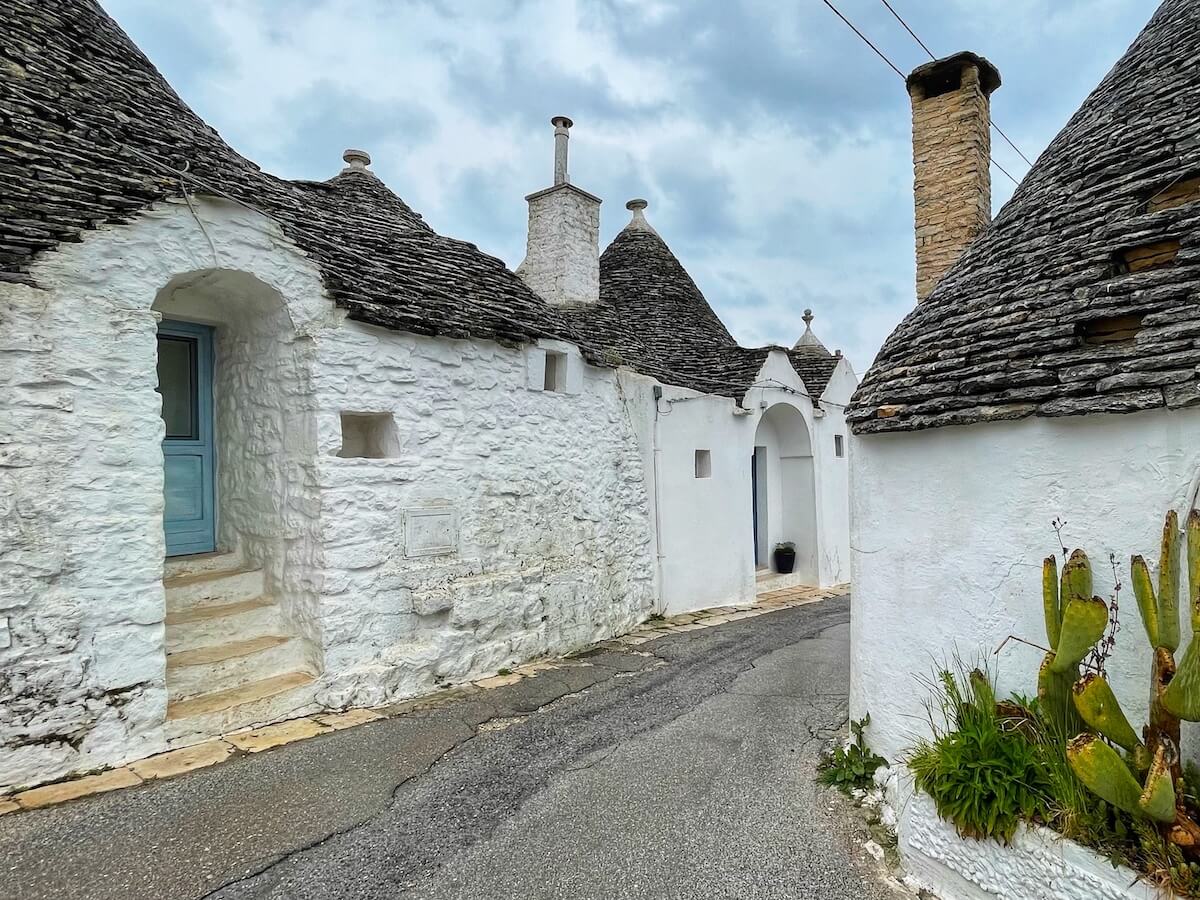
The Shire comes to Puglia. Lined with thousands of beehive-shaped trulli houses, the streets of tiny Alberobello are truly an extraordinary sight. Indeed, the first time you visit Alberobello you could be easily forgiven for thinking that you’ve walked onto the set of the latest Lord of the Rings adaptation, for who could live here but hobbits? In reality, the trullo is a highly distinctive local form of vernacular architecture that emerged on the Murgia plateau in the 1400s.

Originally the huts were entirely constructed according to the dry stone technique - that is, a complex interleaving of stones with no mortar binding them - although the majority of the trulli in Alberobello now feature whitewashed walls, with only the conical roofs remaining unrendered as they taper to a narrow point marked with a white tip. Various theories have been advanced to explain the development of the distinctive architectural style. One of the most plausible suggests that the trulli began life as something of a tax dodge, the dry stone technique allowing for quick dismantling of the entire structure when the authorities came calling in this once isolated area.

Most of the trulli in Alberobello date from the 18th and 19th centuries, and there are two main trulli zones in town: Rione Monti, where most of the buildings have been converted into souvenir shops, bars and restaurants, and Rione Aia Piccola, in which the trulli have retained their domestic function - it’s against the municipal code to convert these to commercial use.
Spectacular though it undoubtedly is, Alberobello does unfortunately feel at times like it has been overrun by a level of tourism it is ill-equipped for, especially in the summer months, so it’s best to visit out of season if you can. What’s more, prices tend to be higher here than in neighbouring towns and there’s also less to do, so we recommend that you choose one of the other destinations on this list as your base in the Valle d’Itria.
Locorotondo
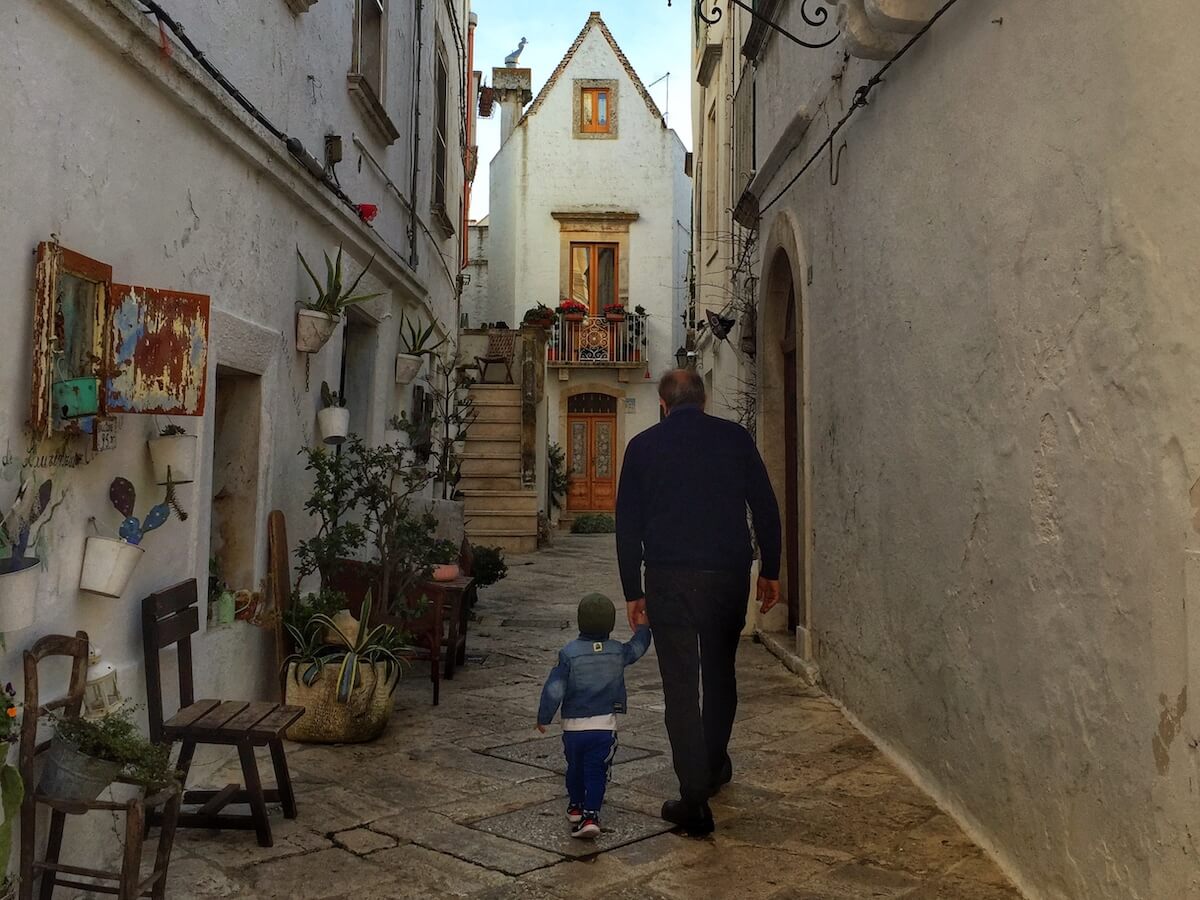
Just a few minutes drive or train ride from Alberobello, delightful Locorotondo is characterised by everything that makes Puglia such a special part of the world. Like most towns in the Itrian Valley Locorotondo is perched at the summit of a steep hill, and the sweeping views over the fertile countryside all around make for some seriously evocative aperitivo spots - grab a table at one of the bars lining Via Nardelli, which divides the old town from the valley below. The densely packed centro storico is characterised by a unique vernacular architecture that predates the development of the trullo: whitewashed houses with steeply pitched tiled roofs known as cummerse (from cum vertice, or with a vertex).
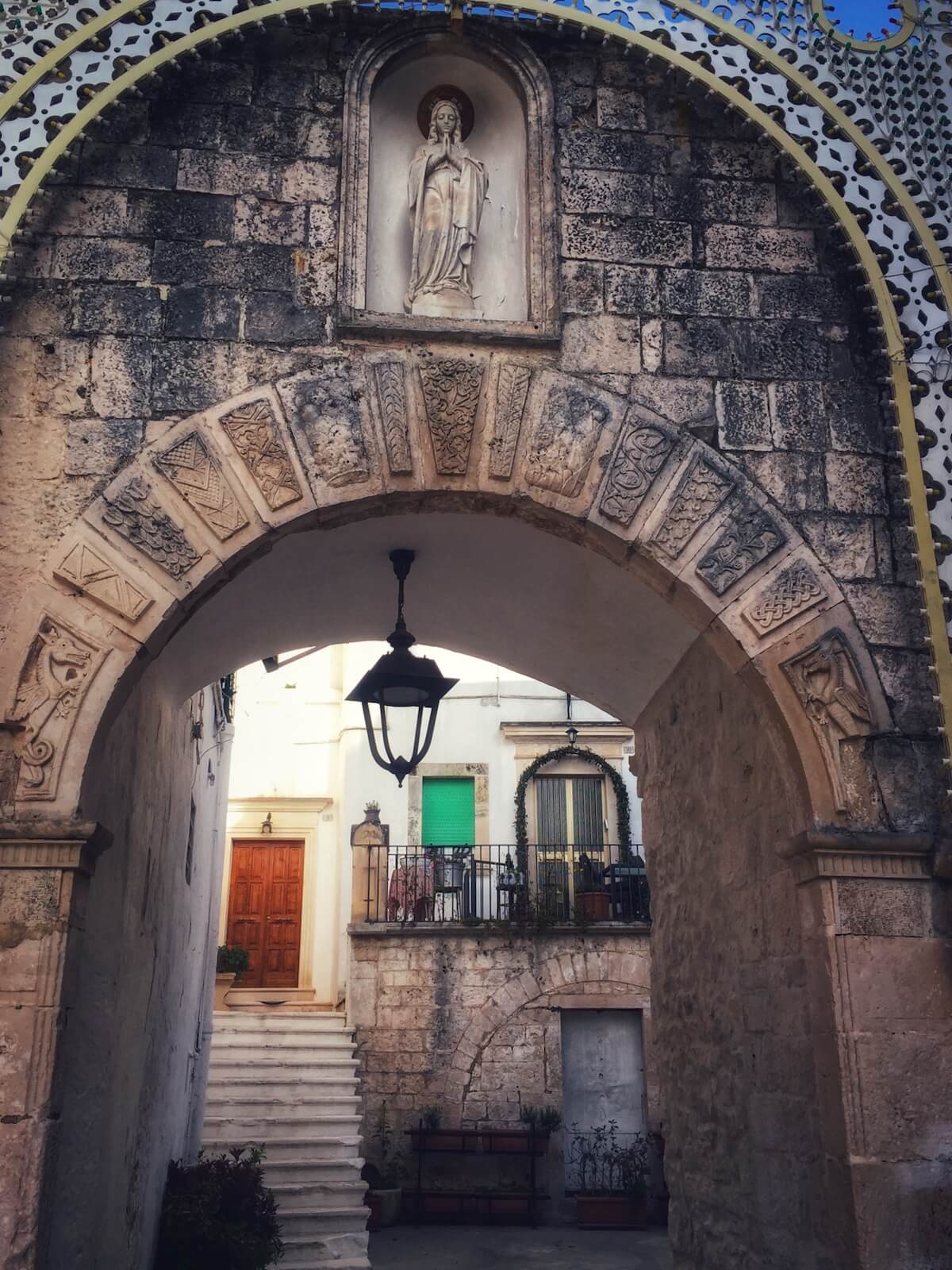
Whilst there might not be that many must-see sights as such in Locorotondo, it’s a joy to wander aimlessly through the warren of streets, and immerse yourself in the town’s unhurried pace of life. Stop off and admire the brightly coloured flowers that bloom invitingly from the windowsills of the cummerse, their colours heightened by the backdrop of blinding white walls.
A series of fine churches, meanwhile, emerge unexpectedly in the piazzas that pierce the maze of narrow streets; look out especially for the 15th-century Madonna della Greca, built over an earlier church and boasting beautiful sculptures as well as a rose window above the main portal, and diminutive San Nicola, with 17th-century frescoes decorating a distinctive barrel-vaulted interior.
Cisternino
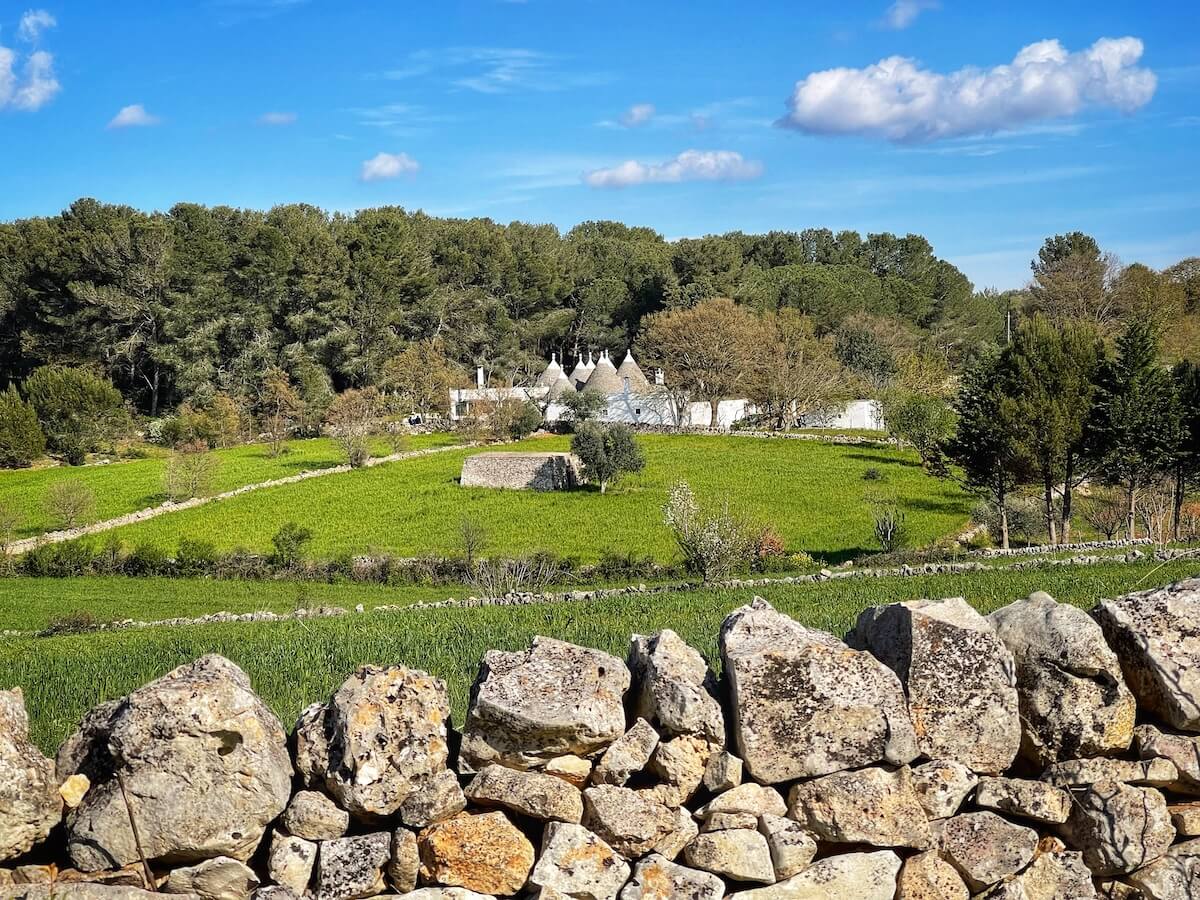
Less renowned than its near neighbour Locortondo, hilltop Cisternino flies largely under the radar of international tourism - making its sparkling white city centre with its tangle of narrow lanes and dazzling piazzas all the more alluring. There are few must-see sights as such in Cisternino, but it’s a wonderful place for some aimless wandering and a great base for embarking into the spectacularly unspoiled nearby countryside, where trulli dot pristine fields framed by blooming almond trees on little-trafficked roads. Nearby, the ciclovia dell'acqua is a fantastic dedicated cycling path that follows the course of a 19th-century aqueduct through some of the Val d’Itria’s most beguiling scenery.
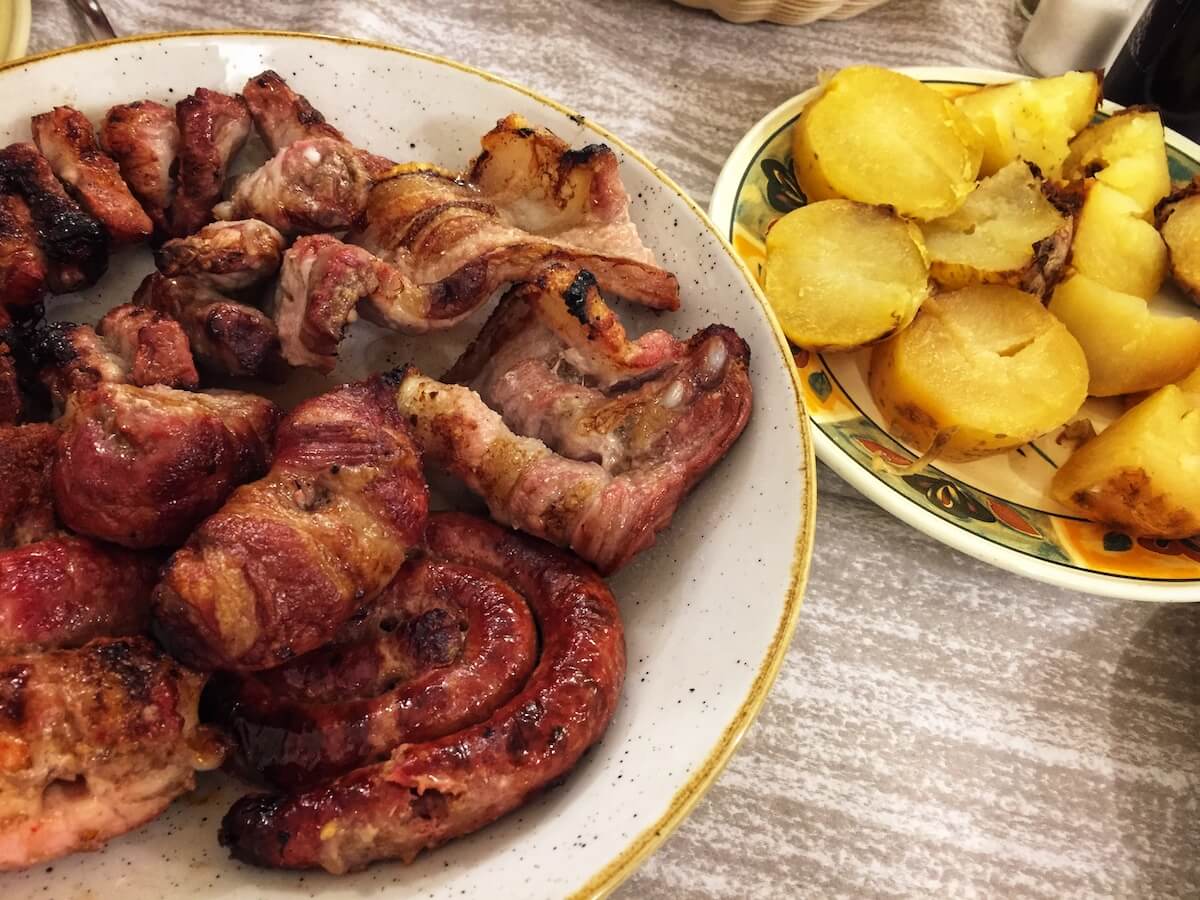
For food lovers, Cisternino also offers plenty to keep you occupied: the town is known as the birthplace of the local Puglian delicacy known as bombette - little meat rolls stuffed with cheese and grilled over charcoal embers, best served with charcoal-baked potatoes and flagons of red wine. You’ll find a number of traditional butchers-cum-grillhouses (macellerie) in the centre of Cisternino, but our favourite is the atmospheric and incredible value Rosticceria Antico Borgo right in the heart of the old town. Do as the locals do and make your way to the meat counter to pick out what you fancy, find a table and let them grill up your choices on the spot!
Martina Franca
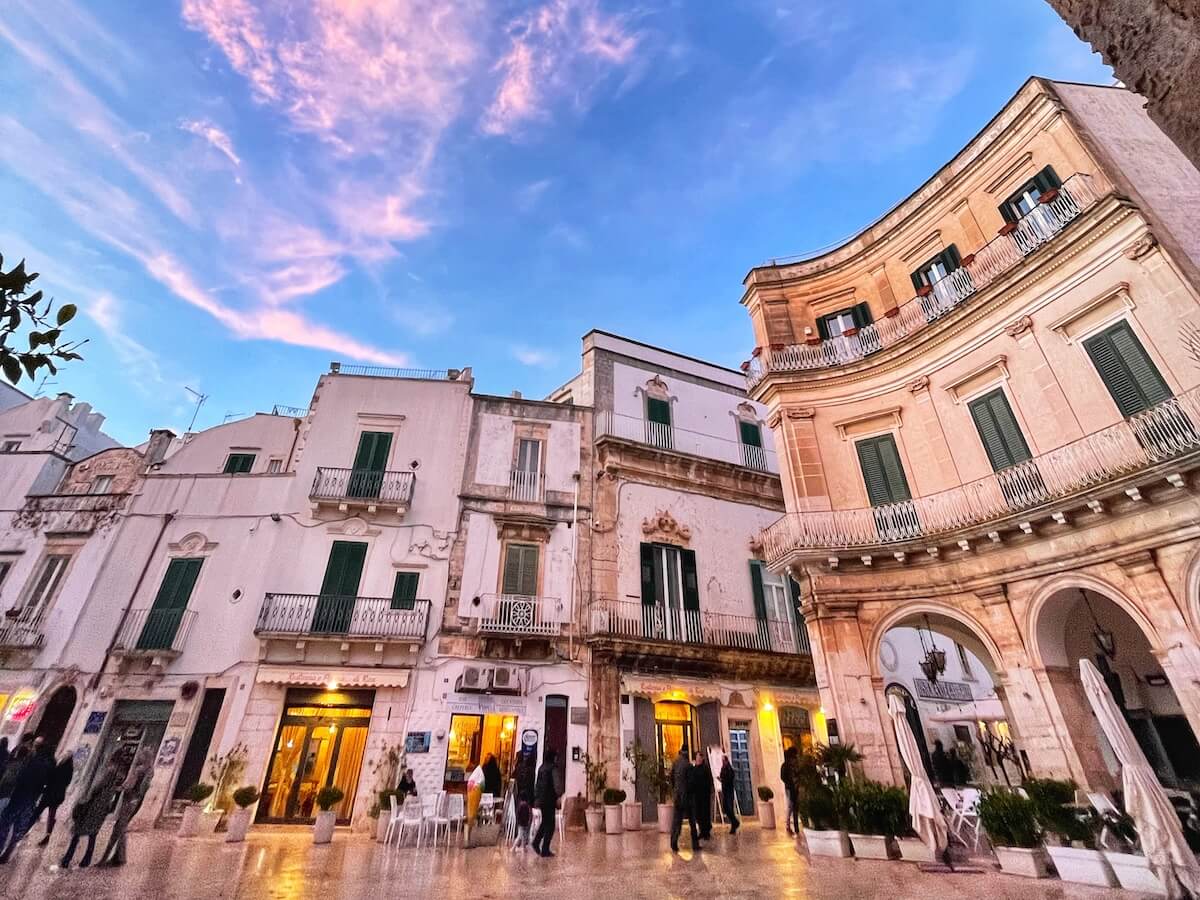
The largest town in the Valle d’Itria, elegant Martina Franca boasts a much more cosmopolitan atmosphere than other settlements in the region. Instead of the diminutive trulli and cummerse of its neighbours, Martina is renowned for its impressive Baroque architecture. The highlight is its imposing cathedral, dedicated to the town’s patron saint Martin, an 18th-century rococo masterpiece boasting a limestone facade studded with dramatic sculptures, including a central relief depicting Saint Martin cutting his cloak in half to share with a passing beggar.

A few steps further along Via Garibaldi will lead you to Piazza Maria Immacolata, the beating heart of the old town. A beautifully curving Baroque portico plays host to a number of bars and restaurants, perfect for observing the evening passeggiata as the sun begins to set. It’s here too that Martina Franca’s distinctive Easter traditions play out - a spectacular procession featuring the Stations of the Cross towards the cathedral on Good Friday, followed by the so-called Sparo della Quarantena ritual the following day to mark the end of Lent. Derived from ancient pagan propitiation rites, this somewhat bizarre tradition involves burning the effigy of an elderly female peasant, as locals cry out commiserations into the flame-licked night.

Residential neighbourhoods slip down the hillside off the central spine centred on Via Garibaldi, and feature stunning whitewashed dwellings where green vines and red carnations creep up the walls, making for a seriously picturesque display. A massive ducal palace (whose frescoed halls you can visit for free) is testament to the town’s one-time historical importance, which it owed in large part to the Arab invasion of Taranto in the 10th-century. The city’s residents fled inland to found the new town, whose wealth increased dramatically when Philip of Anjou instituted tax breaks (known as franchigie, which explains the town’s full name) a few years later.
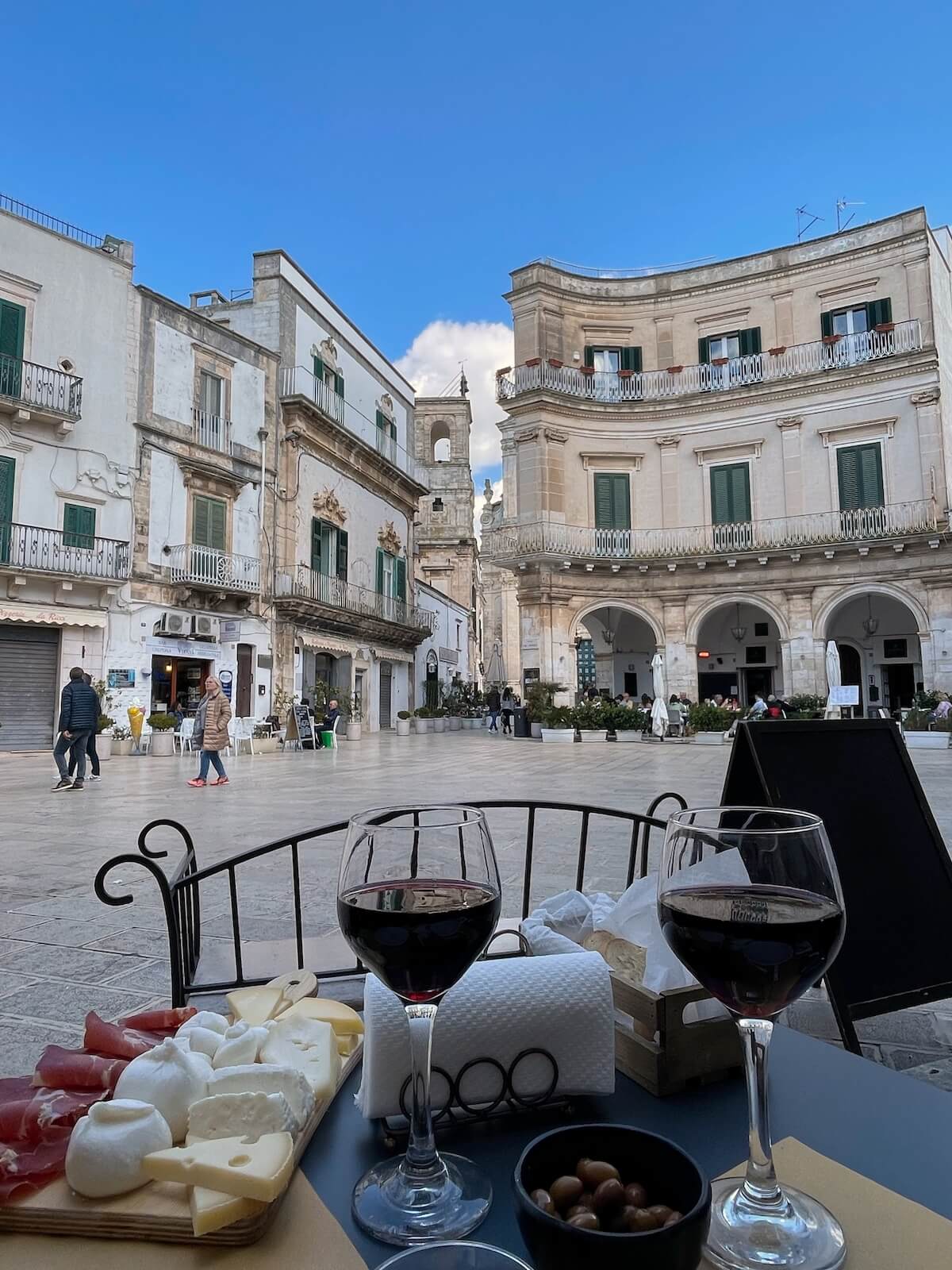
Martina Franca also enjoys excellent culinary credentials, with restaurants like I Templari, Origini and Coco Pazzo offering up refined modern takes on Puglia’s cucina povera tradition. The town is best known for its mouth-watering capocollo, a cured pork neck salami which Americans might know as gabagool. Don’t forget to stop off at historic Caffe Tripoli, a century-old haunt that serves up what are arguably the region’s best bocconotti - sweet pastries stuffed with fillings like ricotta and pear, cream and sour cherry or chocolate and custard.
Ostuni
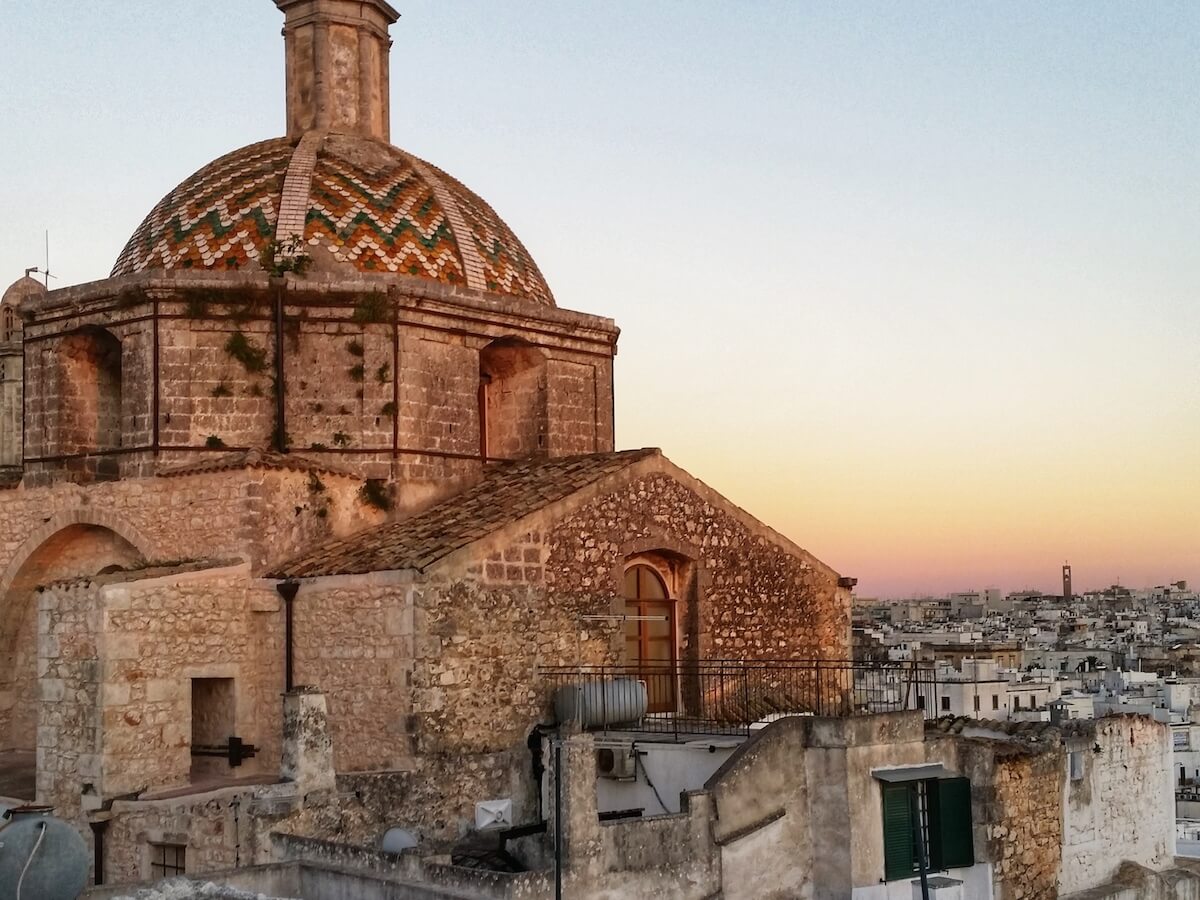
Known as La Citta Bianca, or the ‘White City’ for good reason, Ostuni is famous for its jaw-dropping historical centre, a precious gem that positively sparkles in the blinding southern sun as it spreads out across the slopes of three separate hills. It’s the most south-easterly town in the Val d’Itria, and already the climate and landscape takes on something of the baked coastal terrain of the Salento. More upscale and stylish perhaps than the more provincial Murghian settlements further west, chic boutiques, designer hotels and high quality restaurants make Ostuni an extremely popular destination in the summer months.
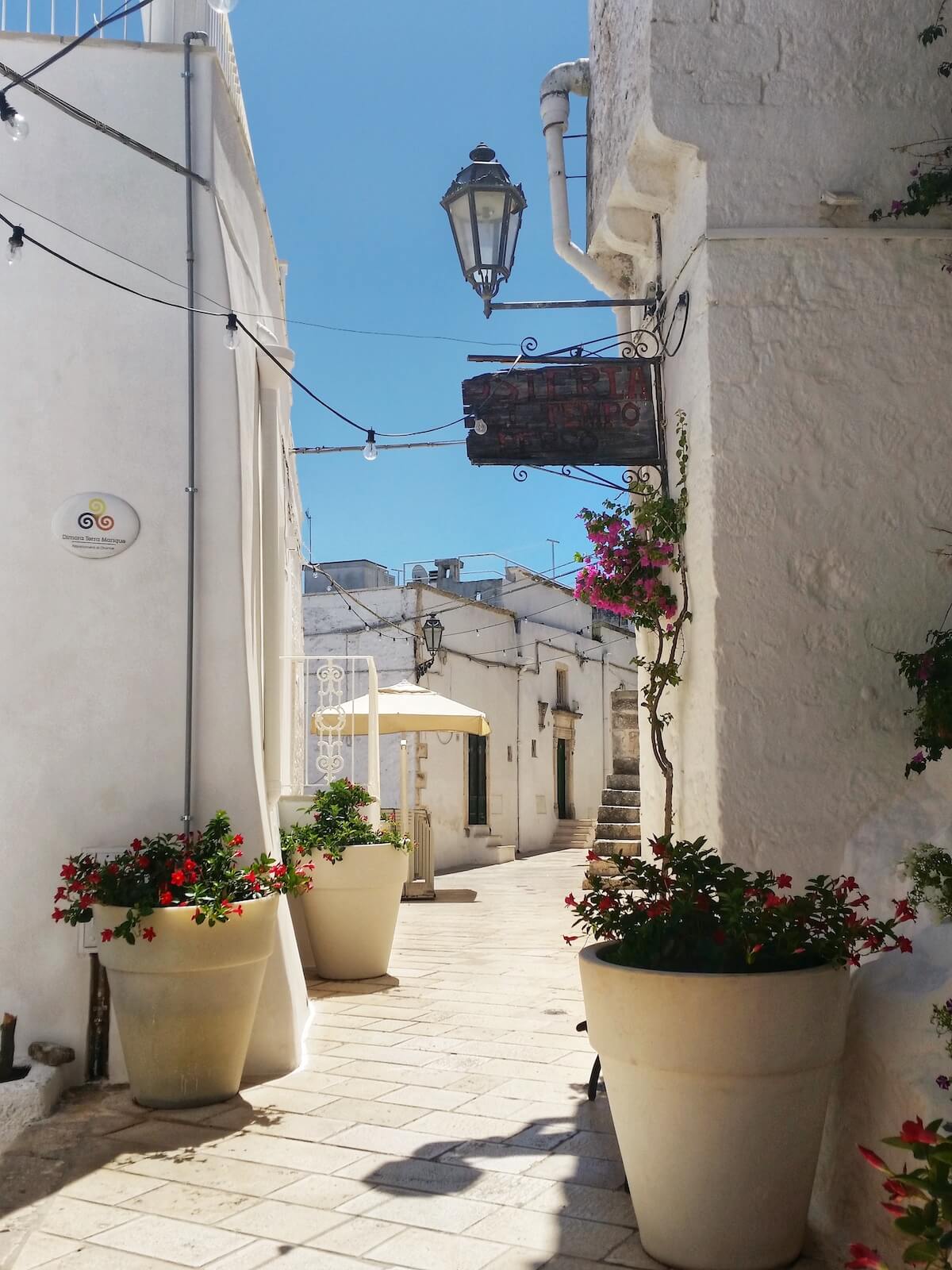
Right at the heart of the historic centre, where narrow streets seem wound in ever tightening concentric rings, is Ostuni’s barnstorming cathedral. Dating from the 15th-century (rebuilt after an earthquake damaged the earlier edifice), the church’s facade is an eclectic mix of styles ranging from Romanesque to Gothic, Byzantine to Renaissance. Precious artworks from across the centuries lie in wait within. The area around the cathedral is always lively, with tables cheerily spilling out into the streets from local bars and restaurants.
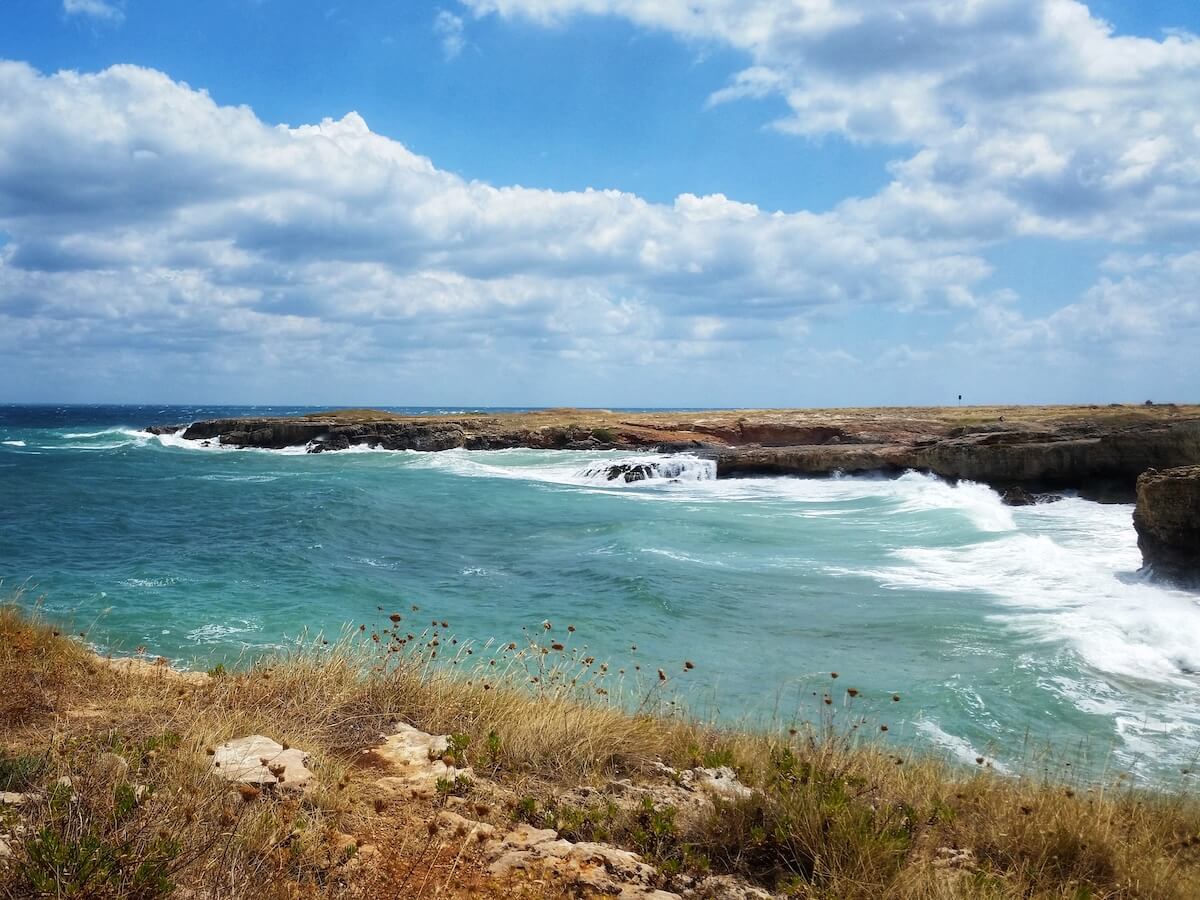
It’s just a hop, skip and a jump to the glittering waters of the Adriatic from here as well, making Ostuni a reasonable base for seaside excursions. The nearest coastline is the Costa Merlata, characterised by rocky coves, low cliffs and pristine waters. Thanks to its strategic location between the fertile lands to the west and the Mediterranean to the east, Ostuni is a great place to sample the full range of Puglian cuisine: you’ll find tip-top interpretations of classics like orecchiette with cime di rapa and broad bean puree happily nestled alongside heaving platters of burrata cheese, capocollo and all manner of fishy delights.
Noci
Surrounded by fragrant groves of oaks and walnut trees, peaceful Noci (the name actually means ‘walnuts’ in Italian) is a true hidden gem of the Valle d’Itria. The town’s atmospheric historic centre is studded by a series of distinctive small courtyards closed on three sides known as gnostre; once streets in their own right, they were progressively closed to open up more space for housing as the dense town expanded in the 18th century.
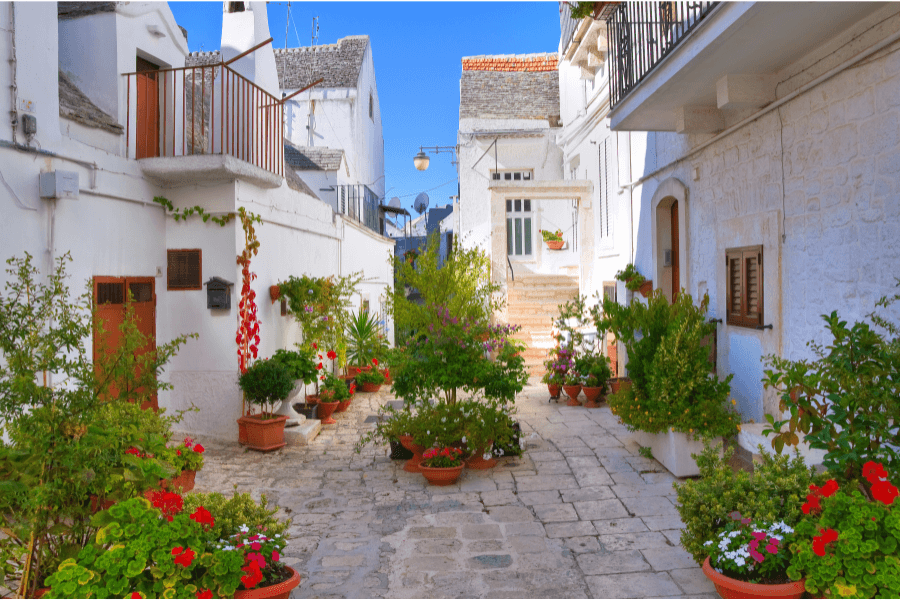
The old town unfolds around the Gothic Chiesa Matrice. According to legend, the church was built on the command of Philip of Anjou after he spied an apparition of the Virgin Mary in the sky over the town as he sheltered beneath a walnut tree during a thunderstorm. Take a peek inside to admire the beautiful 14th-century polychrome baptismal font, as well as numerous paintings. Noci comes alive every November for an annual festival celebrating the uncorking of the local novello wine, served up alongside great braziers of chestnuts - the perfect antidote for chasing away the autumn chill!
We hope you enjoyed our guide to the best towns in the Valle d’Itria! Through Eternity Tours offer award-winning guided excursions across Italy and Europe. If you’re planning a trip to Puglia, get in touch with our travel experts today and we’d be delighted to help you get started working out the details of your perfect itinerary!

